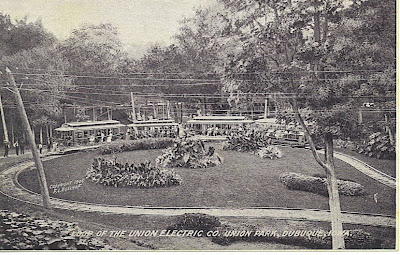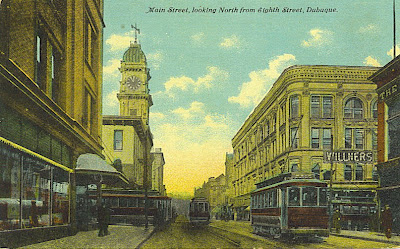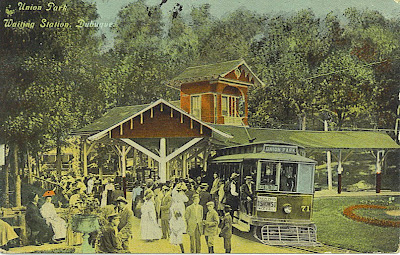 An early shot of the new depot, A.K.A. The Waiting Station, in a postcard entitled "The Loop and Station in Union Park, Dubuque, IA." It has a 1909 postmark, and the image was obviously taken after 1904. Notice that the configuration of the flowers in the center of the loop has changed. Also, there are flower beds along the tracks as the trolley enters and leaves the Loop.
An early shot of the new depot, A.K.A. The Waiting Station, in a postcard entitled "The Loop and Station in Union Park, Dubuque, IA." It has a 1909 postmark, and the image was obviously taken after 1904. Notice that the configuration of the flowers in the center of the loop has changed. Also, there are flower beds along the tracks as the trolley enters and leaves the Loop. By this time the ugly electric poles have disappeared and we start to see hanging light fixtures (like the one in the center of the upper third of this postcard). From the center of the Waiting Station and veering off to the left, the sidewalk to the Fish Pond is visible. Also, the Bowling Alley and The Pavilion are visible through the Waiting Station and the trees.







